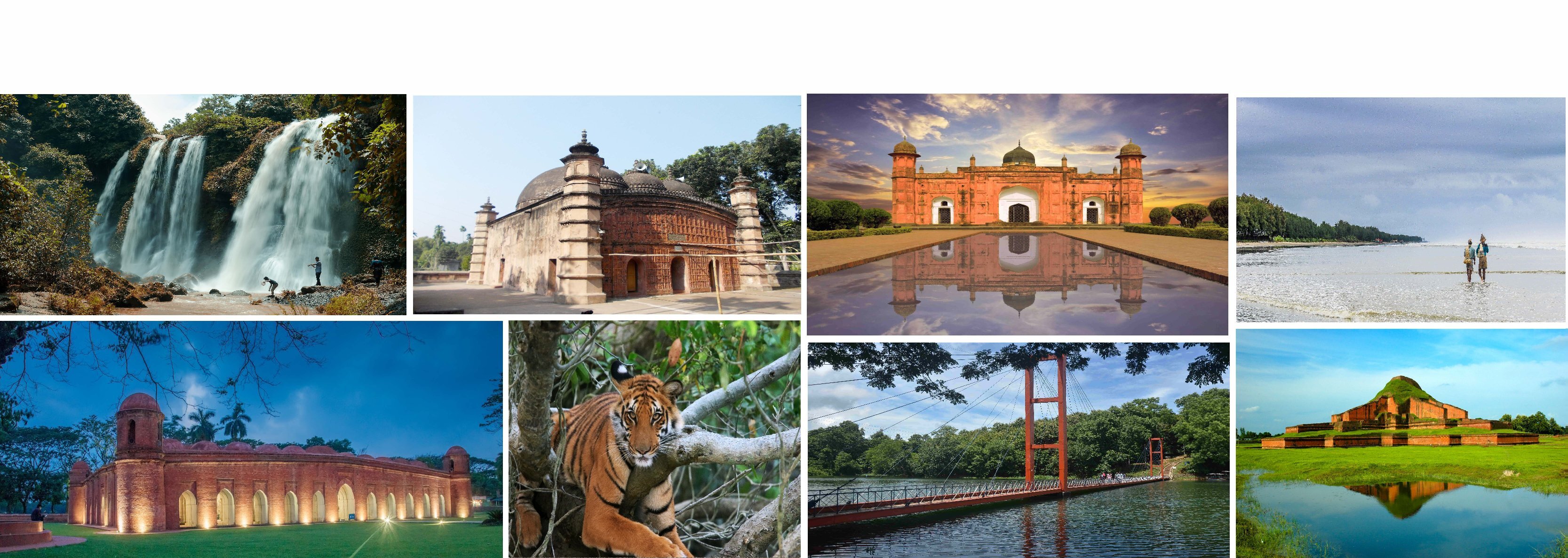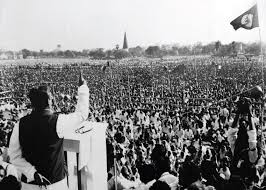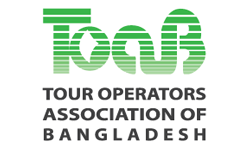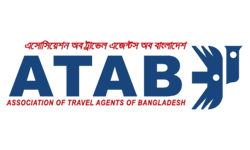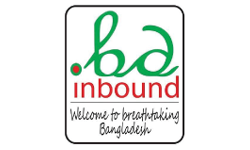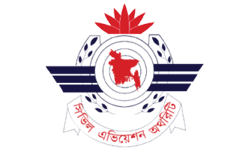Meet Bangladesh
Land
Bangladesh is bordered by the Indian states of West Bengal to the west and north, Assam to the north, Meghalaya to the north and northeast, and Tripura and Mizoram to the east. To the southeast, it shares a boundary with Myanmar (Burma). The southern part of Bangladesh opens into the Bay of Bengal.

Relief
Stretching northward from the Bay of Bengal, Bangladesh constitutes roughly the eastern two-thirds of the deltaic plain of the Padma (Ganges[Ganga]) and Jamuna (Brahmaputra) rivers. Except for small higher areas of jungle-covered old alluvium (rising to about 100 feet [30 meters]) in the northwest and north-center in the Barind and the Madhupur Tract, respectively—the plain is a flat surface of recent alluvium,having a gentle slope and an elevation of generally less than 30 feet (9 meters) above sea level. In the northeast and southeastin the Sylhet andChittagong Hills areas, respectively the alluvial plains give place to ridges, running mainly north-south, that form part of the mountains that separate Bangladesh from Myanmar and India. In its southern region, Bangladesh is fringed by the Sundarbans, a huge expanse of marshy deltaic forest. The Barind is a somewhat elevated triangular wedge of land that lies between the floodplains of the upper Padma and Jamuna rivers in northwestern Bangladesh. A depression called the Bhar Basin extends southeast from the Barind for about 100 miles (160 km) to the confluence of the Padma and Jamuna.This area is inundated during the summer monsoon season, in some places to a depth exceeding 10 feet (3 meters). The drainage of the western part of the basin is centered in the vast marshy area called the Chalan wetlands, also known as Chalan Lake. The floodplains of the Jamuna, which lie north of the Bhar Basin and east of the Barind, stretch from the border with Assam in the north to the confluence of the Padma and Jamuna in the south. The area is dominated by the Jamuna, which frequently overflows its banks in devastating floods. South of the Bhar Basin is the floodplain of the lower Padma.
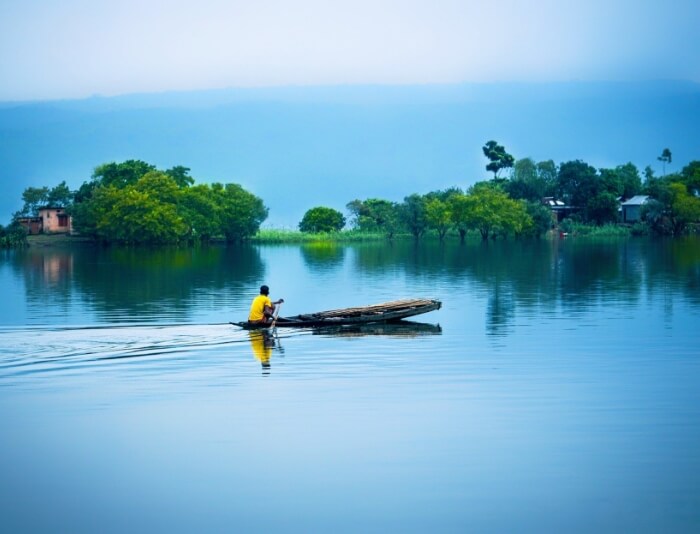
In north-central Bangladesh, east of the Jamuna floodplains is the Madhupur Tract. It consists of an elevated plateau on which hillocks ranging in height from 30 to 60 feet (9 to 18 meters) give contour to cultivated valleys. The Madhupur Tract contains sal trees, whose hardwood is comparable in value and utility to teak. East of the Madhupur Tract, in northeastern Bangladesh, is a region called the Northeastern Lowland. It encompasses the southern and southwestern parts of the Sylhet area (including the valley plain of the Surma River) and the northern part of the Mymensingh area and has a large number of lakes. The Sylhet Hills in the far northeast of the region consists of a number of hillocks and hills ranging in elevation from about 100 feet (30 meters) to more than 1,100 feet (330 meters).
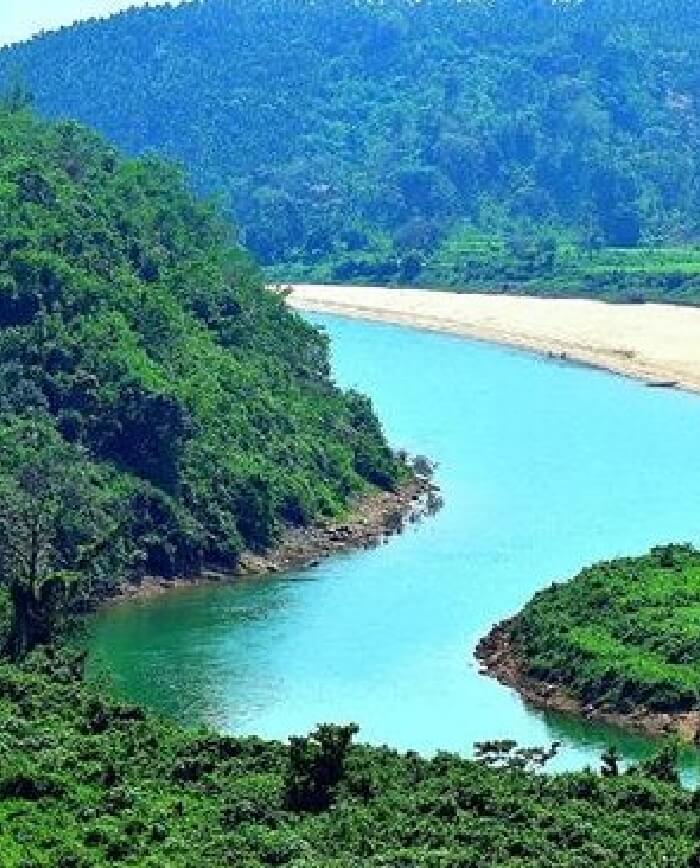
In east-central Bangladesh, the Brahmaputra River in its old course (the Old Brahmaputra River) built up the flood basin of the Meghna River, the region that includes the low and fertile Meghna-Sitalakhya Doab (the land area between those rivers). This area is enriched by the Titas distributary, and land areas are formed and changed by the deposition of silt and sand in the riverbeds of the Meghna River, especially between Bhairab Bazar and Daudkandi. Dhaka is located in this region.
In southern Bangladesh, the Central Delta Basins include the extensive lakes in the central part of the Bengal Delta, to the south of the upper Padma. The basin’s total area is about 1,200 square miles (3,100 square km). The belt of land in southwestern Bangladesh bordering the Bay of Bengal constitutes the Immature Delta. A lowland of some 3,000 square miles (7,800 square km), the belt contains, in addition to the vast mangrove forest known as the Sundarbans, the reclaimed and cultivated lands to the north of it. The area nearest the Bay of Bengal is crisscrossed by a network of streams that flow around roughly oblong islands. The Active Delta, located north of the Central Delta Basins and east of the Immature Delta, includes the Dhaleswari-Padma Doab and the estuarine islands of varying sizes that are found from the Pusur River in the southwest to the island of Sandwip near Chittagong in the southeast.
Lying to the south of the Feni River in southeastern Bangladesh is the Chittagong region, which has many hills, hillocks, valleys, and forests and is quite different in aspect from other parts of the country. The coastal plain is partly sandy and partly composed of saline clay; it extends southward from the Feni River to the town of Cox’s Bazar and varies in width from 1 to 10 miles (1.6 to 16 km). The region has a number of offshore islands and one coral reef, St. Martin’s, off the coast of Myanmar. The hilly area known as the Chittagong Hill Tracts, in the far southeast, consists of low hills of soft rocks, mainly clay and shale. The north-south ranges are generally below 2,000 feet (600 meters) in elevation.
Soils
There are three main categories of soils in Bangladesh: the old alluvial soils, the recent alluvial soils, and the hill soils, which have a base of sandstone and shale. The fertile recent alluvial soils, found mainly in flooded areas, are usually clays and loams, variously pale brown, sandy, chalky, and micaladen They are deficient in phosphoric acid, nitrogen, and humus but not in potash and lime.
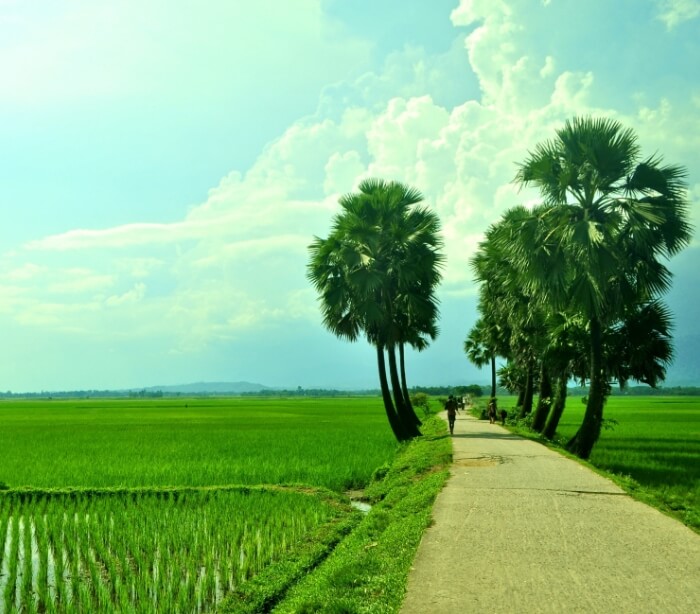
The old alluvial soils in the jungles of the Barind and Madhupur regions are dark iron-rich brown or reddish clays and loams. They are sticky during the rainy season and hard during the dry periods. The hill soils are generally permeable and can support dense forest growth.
Climate
Bangladesh has a typical monsoon climate characterized by rain-bearing winds, moderately warm temperatures, and high humidity. In general, maximum temperatures in the summer months, from April to September, are in the low to mid-90s F (mid-30s C). April is the warmest month in most parts. The range of high temperatures in the winter months, from November to March, is greater than in the summer months. January is the coolest month, with high temperatures averaging in the mid-to-upper 70s F (mid-20s C). The conditions of the lowest atmospheric pressure occur in Bangladesh in June and July, the storm season. Winds are mostly from the north and northeast in winter, blowing gently in northern and central areas and somewhat more aggressively near the coast. During the period of the northwesters (strong winds from the northwest) from March to May, however, wind speeds may rise to 40 miles (65 km) per hour.
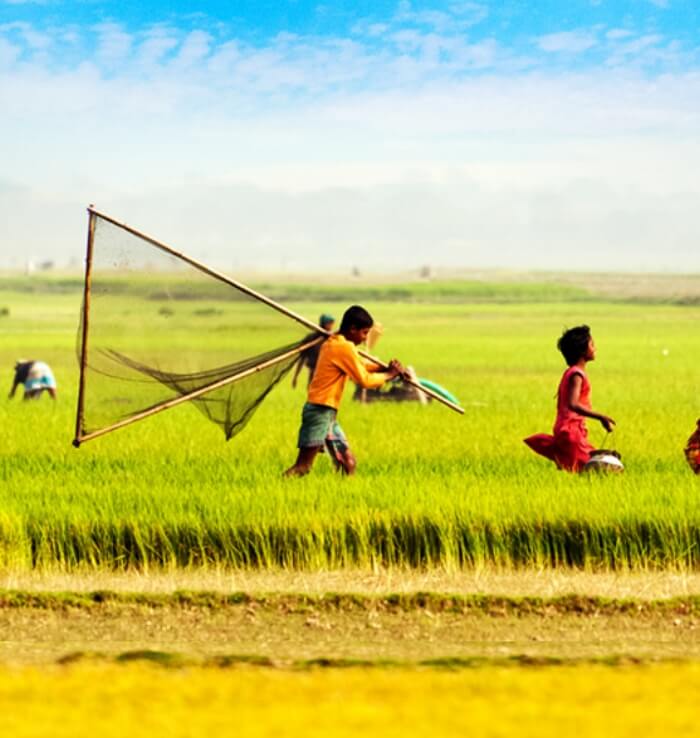
Bangladesh receives heavy rainfall; except for some parts in the west, it generally exceeds 60 inches (1,500 mm) annually. Large areas of the south, southeast, north, and northeast typically receive from 80 to 100 inches (2,000 to 2,500 mm), and the northern and northwestern parts of the Sylhet area usually receive from 150 to 200 inches (3,800 to 5,000 mm). The maximum rainfall occurs during the monsoon period, from June to September or early October.
Storms of very high intensity often occur early in the summer (in April and May) and late in the monsoon season (September to October, and sometimes November). These disturbances may produce winds with speeds exceeding 100 miles (160 km) per hour, and they may generate waves in the Bay of Bengal that crest as high as 20 feet (6 meters) before crashing with tremendous force onto the coastal areas and the offshore islands, causing heavy losses of life and property. Since the early 18th century, when records were first kept, more than 1,000,000 people have been killed in such storms, some 815,000 of them in just three storms occurring in 1737, 1876, and 1970.
Plant and Animal Life
Bangladesh in general possesses a luxuriant vegetation, with villages appearing to be buried in groves of mango, jackfruit, bamboo, betel nut, coconut, and date palm. However, only a small portion of the country’s land surface is covered with forests.
Bangladesh has four different areas of vegetation. The eastern zone, consisting of parts of the Sylhet and Chittagong areas, has many low hills covered with jungles of bamboo and rattan (a species of climbing palm). The most common plant is a large type of bamboo that forms the basis of the country’s paper industry. The central zone, covering parts of the country to the north of Dhaka, contains many lakes and supports swampy vegetation; the soil of part of this zone produces the Madhupur jungles.

The area lying to the northwest of the Jamuna and to the southwest of the Padma forms a flat plain, the vegetation of which consists mostly of cultivated plants and orchards. Babul (Acacia arabica) is the most conspicuous tree. The southern zone along the Bay of Bengal contains the vast wetlands of the Sundarbans, with their distinctive mangrove vegetation. Several of the mangrove species are commercially valuable, including the sundari (Heritiera fomes or H. minor), for which the Sundarbans are named, and the goran (Ceriops roxburghiana). Also valuable are the gewa or gengwa (Excoecaria agallocha) trees, which yield a softwood used for making newsprint. Among the astounding variety of flowers are water lilies (locally called shapla, the country’s national flower), marigolds, tuberoses, and Chinese hibiscus. The bokul (Mimusops elengi) is a common shrub that produces small red berries.
Bangladesh has an abundance of wildlife, including more than 100 species of mammals, although the population of some species has diminished significantly since the early 20th century. Elephants, living in herds of fewer than a dozen to nearly 100, are found in the Chittagong Hill Tracts and in the northeastern Sylhet region. Domesticated water buffaloes (Bubalis bubalis) are used for plowing and pulling carts. Of the different kinds of deer, the small muntjac (genus Muntiacus; also called barking deer) and the large sambar deer (Cervus unicolor), with its maned neck, are well known. The samba lives in the eastern jungles of the country. The medium-sized spotted deer (C. axis) was once common in many parts of the country but by the early 21st century had become limited to the Sundarbans region. The barasingha (C. duvauceli) also once inhabited the Sundarbans but became extinct in Bangladesh in the 20th century. Similarly, the hog deer (Axis procinus) has disappeared from the country.
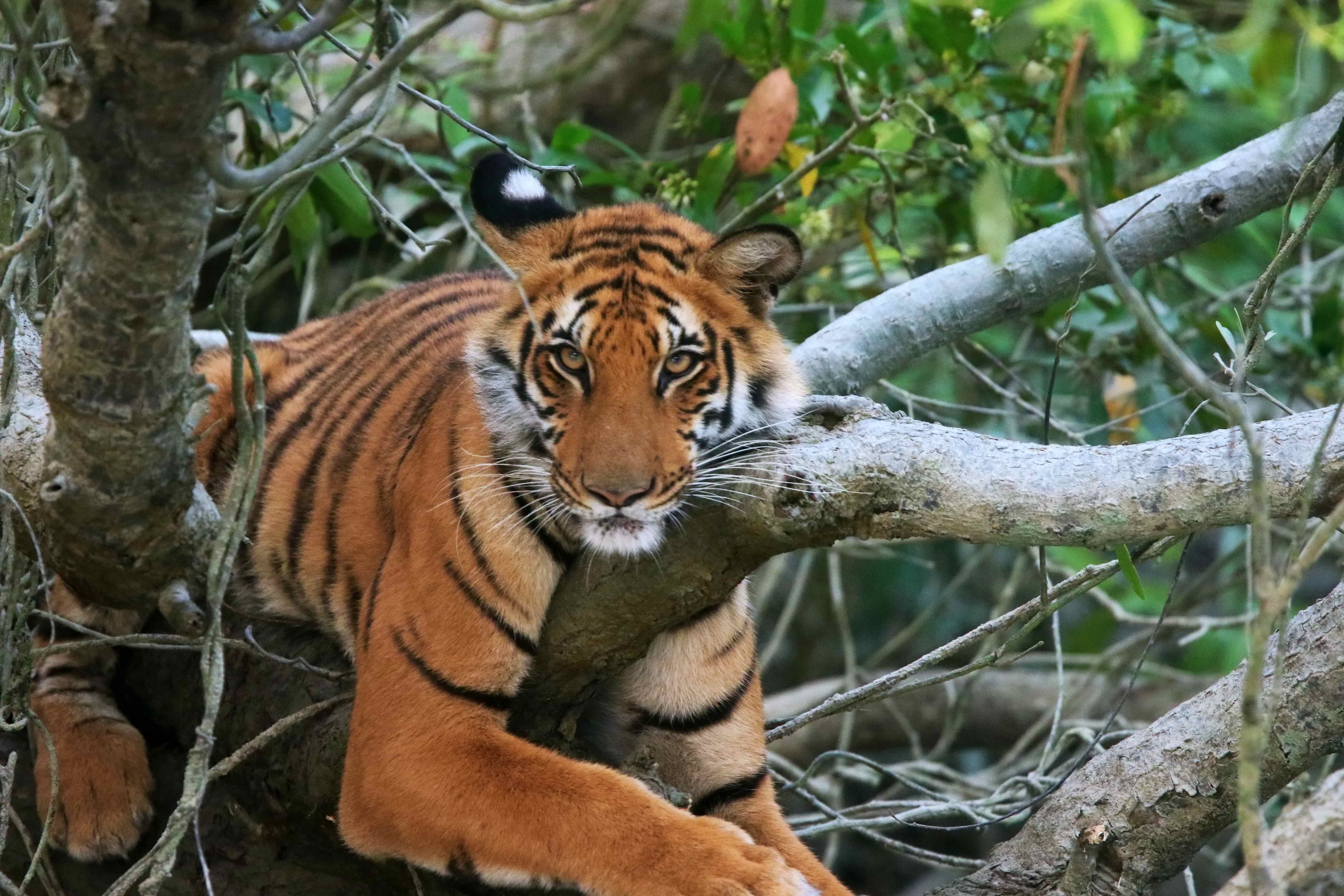
Of the carnivores, the royal Bengal tiger (Panthera tigris tigris) is the best known. The common leopard (P. pardus) is native to the region, as is its smaller relative, the rare clouded leopard (Neofelis nebulosa), with its dark gray oblong-spotted fur. The ferocious leopard cat (Felis bengalensis) is about the size of the domestic cat but with longer legs.
Bears in Bangladesh include the sloth bear (Melursus ursinus), Asiatic black bear (Ursus thibetanus; also called Himalayan black bear), and sun bear (U. malayanus). The sloth bear is the most common. Jackals (Canis aureis), whose eerie howling at night is a familiar sound in Bangladesh, are abundant, as are various species of mongooses. The Bengal, or rhesus, monkey (Macaca mulatta) is the most common primate in the country.
Bangladesh is inhabited by hundreds of species of birds. Common house crows are found everywhere, and their cries are detested by many people of Bangladesh, who regard crows as bad omen. Bulbuls, magpie-robins, and a wide variety of warblers are also found; some are migrants that appear only in winter. Several kinds of flycatchers occur, and there are mynah birds of several kinds. Other species of birds include various game birds, parakeets, cuckoos, hawks, owls, kingfishers, hornbills, hoopoes, woodpeckers, and vultures. Among the eagles, the crested serpent eagle and the ring-tailed fishing eagle are the most common. There also are an array of water birds, including herons, storks, ducks, and wild geese.
People
Ethnic Groups
The vast majority of the population of Bangladesh is Bengali—a term describing both an ethnic and a linguistic group. The Bengali people are historically of diverse origin, having emerged from the confluence of various communities that entered the region over the course of many centuries. The Vedda peoples were perhaps the earliest group to settle in the area. According to some ethnologists, they were followed by peoples from the Mediterranean and neighbouring areas, particularly those who spoke Indo-European languages. During the 8th century CE, persons of Arab, Persian, and Turkish origin moved in large numbers to the subcontinent. By the beginning of the 13th century, they had entered what is now Bangladesh. The contention that contemporary Bengali Muslims are all descended from lower-caste Hindus who had converted to Islam, then, is clearly incorrect; a substantial proportion are descendants of Muslims who reached the subcontinent from elsewhere.
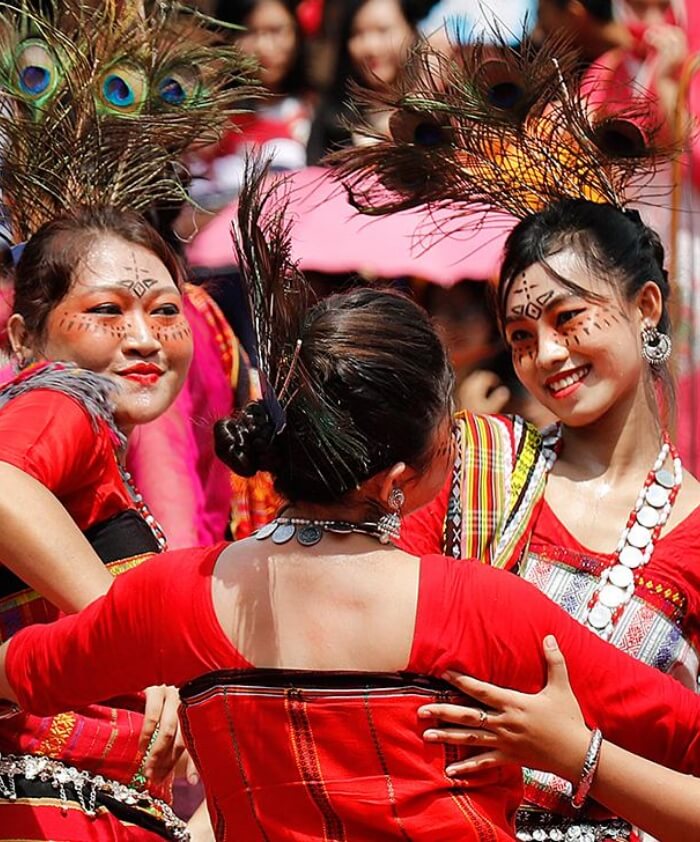
Bangladesh is inhabited by hundreds of species of birds. Common house crows are found everywhere, and their cries are detested by many people of Bangladesh, who regard crows as a bad omen. Bulbuls, magpie-robins, and a wide variety of warblers are also found; some are migrants that appear only in winter. Several kinds of flycatchers occur, and there are mynah birds of several kinds. Other species of birds include various game birds, parakeets, cuckoos, hawks, owls, kingfishers, hornbills, hoopoes, woodpeckers, and vultures. Among the eagles, the crested serpent eagle and the ring-tailed fishing eagle are the most common. There also are an array of water birds, including herons, storks, ducks, and wild geese.
Languages
Bengali (Bangla), the national language of Bangladesh, belongs to the Indo-Aryan group of languages and is related to Sanskrit. Like Pali, however, and various other forms of Prakrit in ancient India, Bengali originated beyond the influence of the Brahman society of the Aryans. The Pala rulers of Bengal (8th to 12th century)—who were Buddhists and whose religious language was Pali—did not inhibit the emergence of a colloquial tongue known as Gaudiya Prakrit, the language from which Bengali developed.
Bengali is the mother tongue of almost the entire population of Bangladesh. However, the indigenous minority groups have their own languages and dialects, some of which are Tibeto-Burman languages. English, an Indo-European language, is spoken in urban centers and among educated groups.
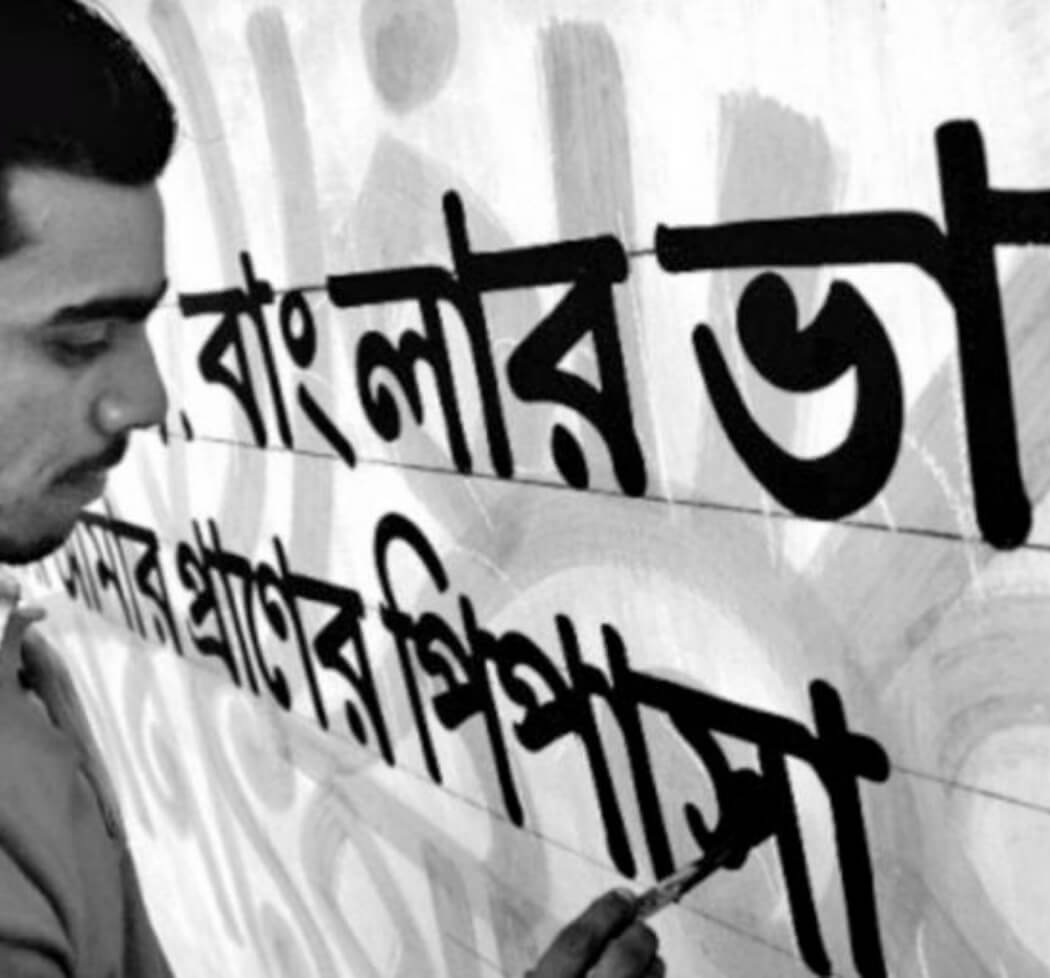
The Bengali language has two distinct styles: sadhu bhasa, the literary style, which contains many words derived from Sanskrit, and calit bhasa, the colloquial style, which is the standard medium of informal discourse, both spoken and written. Until the 1930s sadhu bhasa was used for all printed matter, but calit bhasa is now the basic form used for contemporary literature. There also are a number of dialects. Bengali contains many loanwords from Portuguese, English, Arabic, Persian, and Hindi.
Religion
Most of the people of Bangladesh follow the religion of Islam, which was made the official religion by a 1988 constitutional amendment. The arrival of Muslims in Bengal at the beginning of the 13th century and the rapid increase in their strength and influence permanently changed the character and culture of the area. When the Muslims first arrived, Hinduism was by far the dominant religion, although there were pockets of Buddhists and a few adherents of local religions. The Hindus remained in the majority through the Mughal period (16th to 18th century). Even as late as the early 1870s, there were more than 18 million Hindus in Bengal, compared with about 16 million Muslims. From the 1890s onward, however, the weight began to shift toward the Muslims.
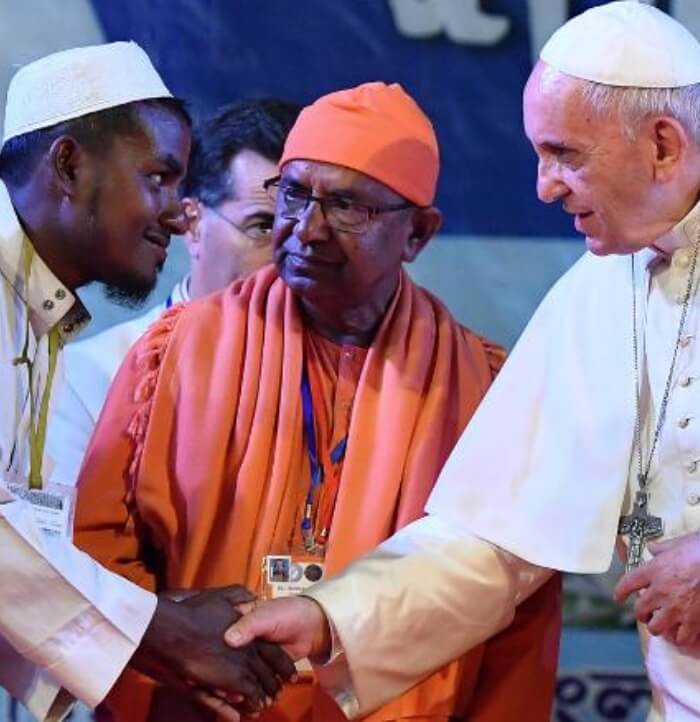
There were several reasons for the increase in the proportion of the Muslim population. Perhaps the most significant was the activity of ascetics and Sufis (practitioners of Sufism, a mystical form of Islam), who won converts among lower-caste Hindus. Also significant was an influx of Muslims from northern India and from other countries.
Most Muslims are Sunni, but there are a small number of Shīʿites, primarily descendants of immigrants from Iran. Hindus form a significant minority, while Roman Catholics and Buddhists constitute just a tiny fraction of the population. Of the tribes in the Chittagong Hill Tracts, the Chakma, Marma, and Mro are mostly Buddhists. Portions of the Kuki, Khomoi, and Mro communities practice local religions. While most of the Mizo are Christians, the Tripura are Hindus.
Economy
Bangladesh’s heavy dependence on agriculture has long contributed to seasonal unemployment among rural farmworkers, as well as to a generally low standard of living in many areas. To counteract this imbalance, a policy of industrialization was adopted in the mid-20th century. During the period of Pakistani administration (1947–71), priority was given to industries based on indigenous raw materials such as jute, cotton, hides, and skins. The principle of free enterprise in the private sector was accepted, subject to certain conditions, including the national ownership of public utilities. The industrial policy also aimed to develop the production of consumer goods as quickly as possible in order to avoid dependence on imports.
Agriculture and fishing
Bangladesh has remained largely agricultural, with nearly half the population employed in this sector in the early 21st century. Rice is the predominant agricultural product, but jute and tea, both of which are key sources of foreign exchange, also are important. Indeed, the country is one of the world’s leading suppliers of raw jute. Other major agricultural products include wheat; pulses, such as peas, beans, and lentils; sweet potatoes; oilseeds and spices of various kinds; sugarcane; tobacco; and fruits, such as bananas, mangoes, and pineapples. The country also is a leading producer of goat milk and goat meat.
Agriculture was at one time wholly dependent upon the vagaries of the monsoon; a poor monsoon always meant poor harvests and the threat of famine. To reduce the risk of crop failure as a result of such adverse weather conditions, a number of irrigation projects—including the construction of dams—have been undertaken to control floods and to conserve rainwater for use in the dry months. Among the most important of these initiatives have been the Karnaphuli Multipurpose Project in the southeast, the Tista Barrage Project in the north, and the Ganges-Kabadak Project, to serve the southwestern part of the country. Economic planning has encouraged double and triple cropping, intercropping, and the increased use of fertilizers.
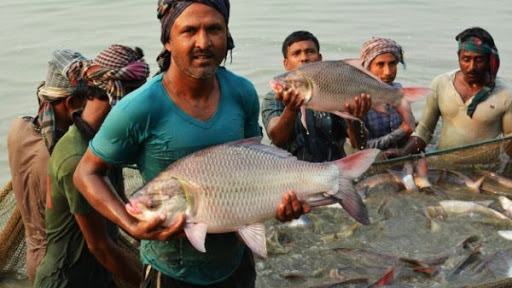
The rivers of Bangladesh are particularly amenable to breeding and raising fish, and aquaculture is the source of more than two-fifths of the country’s fish yield. However, the rivers and seacoast also offer opportunities for open-water fishing, mostly in the estuaries of the Bay of Bengal. Among the varieties of fish caught are the marine rupchanda, or pomfret, and the freshwater hilsa, a relative of the shad.
Transportation
Central to the country’s transportation system are networks of waterways, roads, and railways, the last built mostly during British rule. Inland waterways are important, providing low-cost transport and access to areas where land transport would be costly. They carry most of the domestic and foreign cargo. Chief seaports are Chittagong and Mongla, and there are international airports at Dhaka and Chittagong, as well as several other airports offering domestic service.
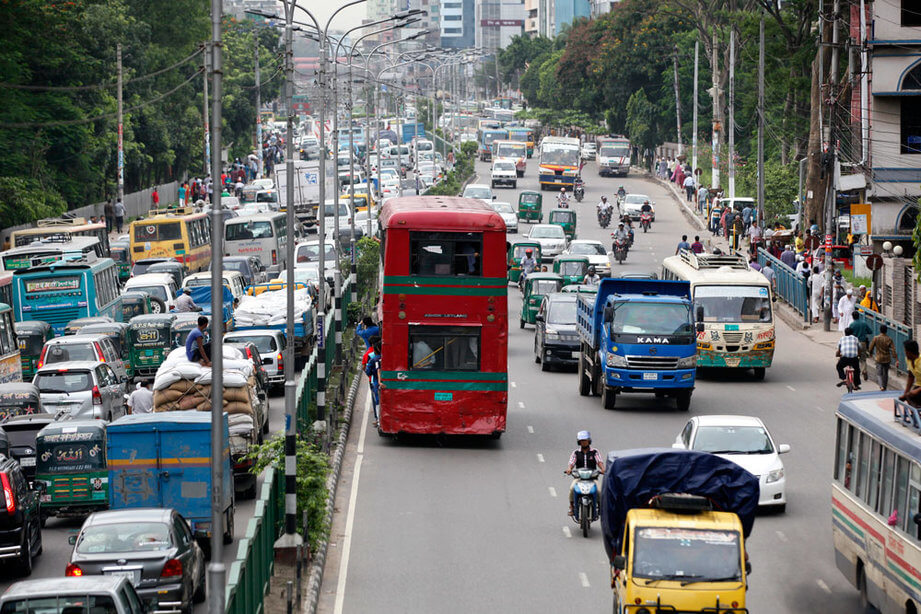
The forms of transport used on Bangladesh’s roads range from automobiles and buses to the bullock cart. Two-wheeled horse-drawn jigs and bullock carts are still used, primarily in the north in Rajshahi. Town and city dwellers both rely largely on the cycle rickshaw and on two types of three-wheeled vehicles, known locally as auto and tempo. The lightweight cycle rickshaw, which can easily be used on unpaved roads, is the most popular vehicle in towns and villages. The annual inundations that submerge most of the rural roads necessitate the use of so-called country boats—flat wooden boats that are hand-propelled by means of poles or long paddles.
Government & Society
Constitutional framework
While Bangladesh’s constitution of 1972 specifies a parliamentary form of government under a prime minister and a president elected by a national assembly, its implementation has been interrupted by coups. In 1975 a military coup led to a regime of martial law, and, though the form of government that followed was a mixture of presidential and parliamentary systems, power effectively remained with the army. The country experienced additional upsets and periods of martial law in the 1980s, but in 1991 a parliamentary system was restored, with a president as head of state and a prime minister as head of government.
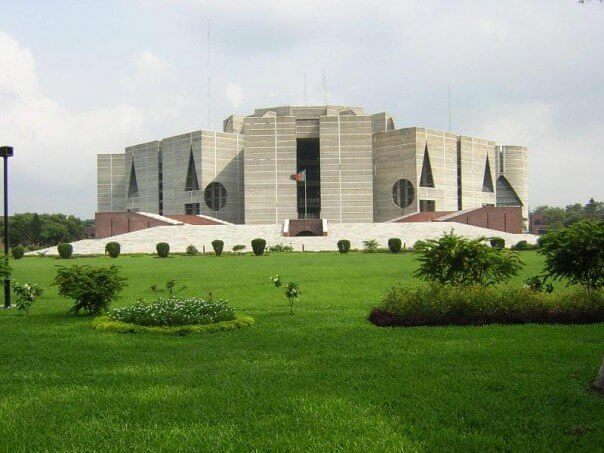
The parliament of Bangladesh, called the Jatiya Sangsad (House of the Nation), is a unicameral entity consisting of some 350 seats, most of which are filled through direct election. The remaining seats are reserved for women; these members are elected by the parliament itself. Legislators serve five-year terms. The parliament elects the president, who also serves a five-year term, with a two-term limit. The president then appoints the leader of the legislative majority party (or coalition) as prime minister. The forms of transport used on Bangladesh’s roads range from automobiles and buses to the bullock cart. Two-wheeled horse-drawn jigs and bullock carts are still used, primarily in the north in Rajshahi. Town and city dwellers both rely largely on the cycle rickshaw and on two types of three-wheeled vehicles, known locally as auto and tempo. The lightweight cycle rickshaw, which can easily be used on unpaved roads, is the most popular vehicle in towns and villages. The annual inundations that submerge most of the rural roads necessitate the use of so-called country boats—flat wooden boats that are hand-propelled by means of poles or long paddles.
Local government
Between the early 1980s and the early 1990s, local government in Bangladesh underwent a large-scale administrative reorganization to decentralize power. The resulting structure consisted of several major divisions, each of which was subdivided into a number of districts, called zila. These districts were parceled further into smaller units, called thana. In the early 21st century, Bangladesh consisted of 6 divisions, more than 60 districts, and more than 500 thana. Villages—the smallest unit of government—numbered in the tens of thousands and were grouped into unions beneath the thana.
Local government in both rural and urban regions is primarily in the hands of popularly elected executives and councils. Each division is headed by a commissioner. Executives at the district and thana levels are assisted by various professionals appointed by the national government, as well as by their elected councils.
Justice
Bangladesh has maintained essentially the same judicial system that was in operation when the territory was a province of Pakistan and that owes its origins to the system in operation under the British raj. The 1972 constitution divided the Supreme Court of Bangladesh into Appellate and High Court divisions and mandated a complete separation of the judiciary and executive branches of government. During the subsequent authoritarian regime, however, the power of the Supreme Court was greatly reduced. In 1977 a Supreme Judicial Council was established to draw up a code of conduct for Supreme Court and High Court judges, who may be removed from office by the president upon the council’s recommendation.
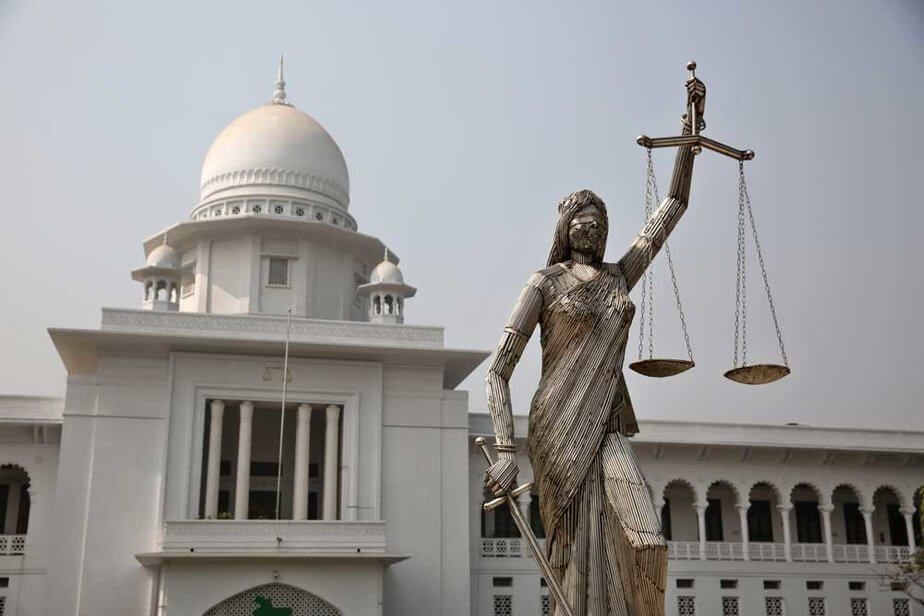
Judges from the High Court may go on the circuit for a portion of the year to hear cases from lower courts in other parts of the country. Those lower courts include district courts, sessions courts, and several types of magistrate courts. The magistrate courts handle the vast majority of criminal cases.
Health and welfare
Bangladesh has many government hospitals and rural health centers. Tuberculosis, cholera, and malaria continue to pose threats to public health, and since about 2000 outbreaks of dengue fever have been a concern as well. However, an effective approach to the treatment of cholera and tuberculosis has been developed by research laboratories and hospitals in Dhaka and Comilla, and the incidence of malaria has been reduced by a malaria-eradication program in which swamps and marshes are regularly sprayed with insecticides. Historically, leprosy also was a serious problem in Bangladesh. In the late 20th century, however, the government took aggressive measures to eradicate the disease, and within less than a decade, leprosy had virtually disappeared from the country.
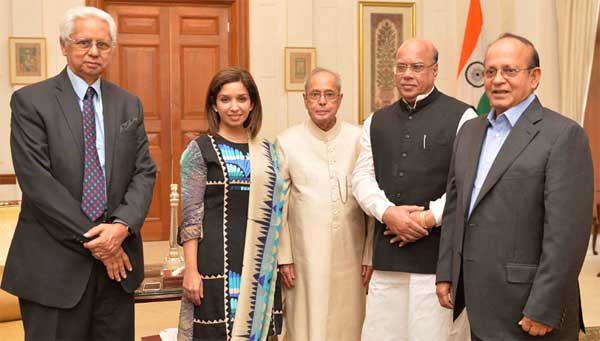
Social services are provided by private agencies and government departments. These services include, among others, community development projects, schools for handicapped children, youth centers, orphanages, and training institutes for social workers. A family-planning program inaugurated in the late 20th century has helped to control population growth.
Education
The foundation of the educational system in Bangladesh was laid down during the period of British rule. The system has three levels—primary, secondary, and higher education. Primary education, which is free but not compulsory, is for children up to about age 10. Only about half of all children attend primary school. Secondary education is divided into three levels—junior secondary, high school, and higher secondary (intermediate college)—with public examinations being held at the conclusion of each level of schooling. Schools in cities and towns are generally better staffed and financed than those in rural areas.
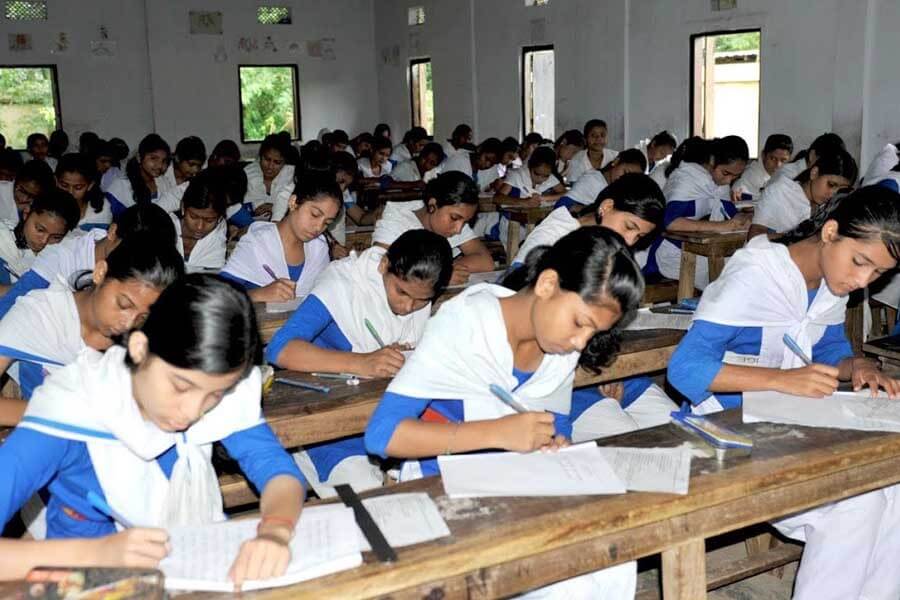
There are hundreds of colleges, most of them affiliated with one of the larger universities, such as the University of Dhaka (1921), the University of Rajshahi (1953), or the University of Chittagong (1966). Other prominent institutions include Jahangirnagar University (1970) on the outskirts of the capital, the Bangladesh Agricultural University (1961) at Mymensingh, the Bangladesh University of Engineering and Technology (1962) at Dhaka, and the Islamic University (1980) at Kushtia. Medical education is provided by several medical colleges and an institute of postgraduate medicine at Dhaka. Each college or institute has a full-fledged hospital attached to it.
For vocational training, Bangladesh relies on several engineering colleges and a network of polytechnic and law colleges. In addition, an array of specialized colleges are dedicated to training students in areas such as the arts, home economics, social welfare and research, and various aspects of agriculture.
Cultural Life
The Bengali language, Islamic religion, and rural character of Bangladesh all serve to unify the country’s culture to a considerable degree. Although some regional variation occurs across the Bengali community, cultural differences between ethnic, religious, and social minorities and between rural and urban populations are much more salient.
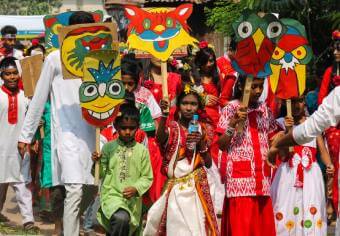
Daily life and social customs
The typical household in Bangladesh, particularly in the villages, includes several generations of extended family. Most marriages are arranged by parents or other relatives, but increasing numbers of
educated men and women choose their own partners. Custom and religion among Muslims require that a dowry be offered by the husband to the wife, but it is usually claimed only in the event of separation or at the husband’s death. Divorce is permissible among Muslims, and Muslim law (Sharīʿah) permits limited polygyny, although it is not widespread. Hindus may obtain a separation by application to a court of law.
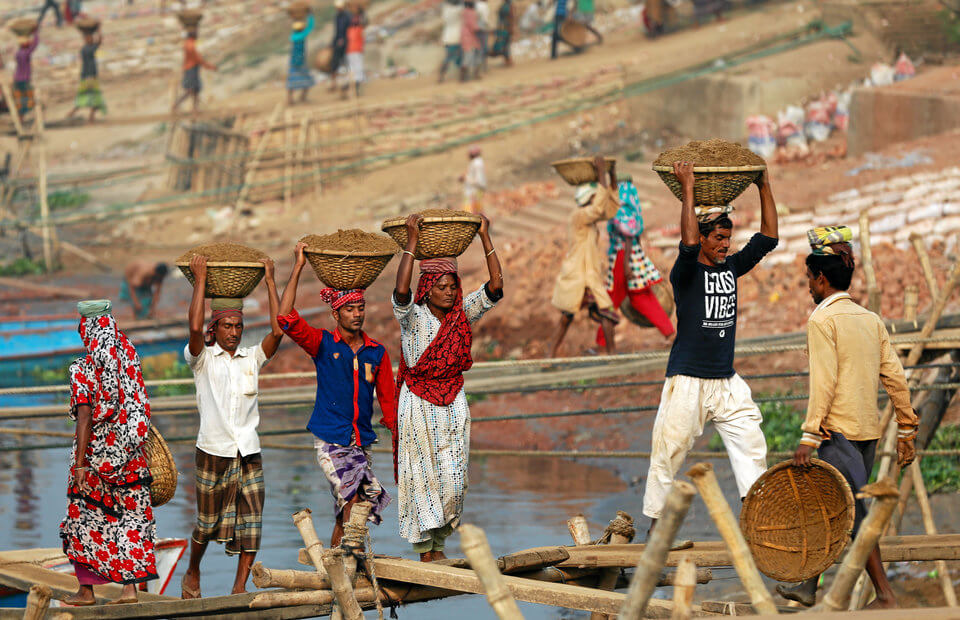
The main festivals in Bangladesh are religious. The two most important are ʿĪd al-Fiṭr, which comes at the end of Ramadan, the Muslim month of fasting, and ʿĪd al-Aḍḥā, or the festival of sacrifice, which falls on the 10th day of the last month of the Islamic calendar. On both occasions families and friends exchange visits.
While rice, pulses, and fish continue to constitute the staple diet of Bangladeshis, shortages of rice since World War II have forced the acceptance of wheat and wheat products as alternatives. Meat, including goat and beef, also is eaten, especially in the towns. At weddings and other festive occasions, seasoned rice (pilau) accompanies highly spiced meat dishes and curries. Bangladesh is noted for a large variety of milk-based sweets.
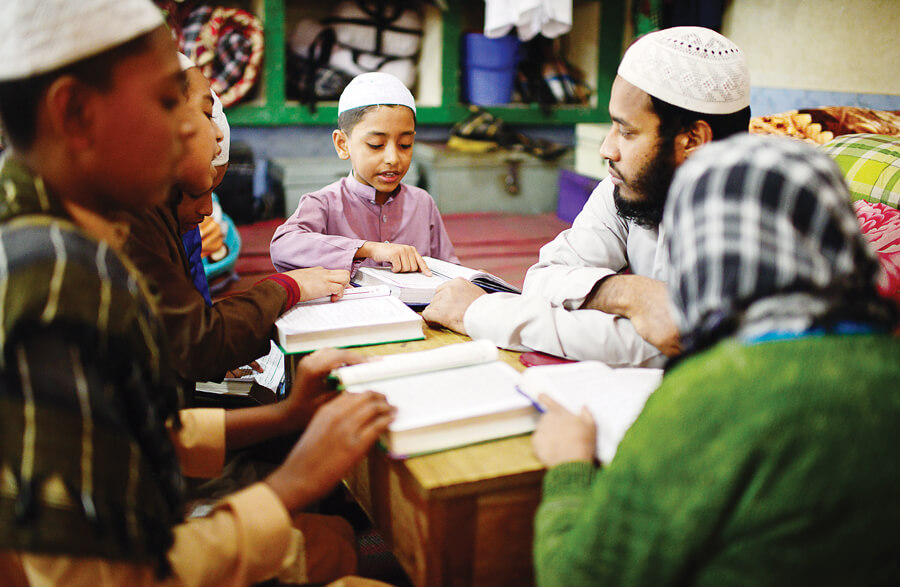
The lungi (a length of cloth wrapped around the lower half of the body, comparable to the Malaysian sarong) with a short vest is the most common form of male attire in the countryside and in the less-wealthy sections of urban settlements. Men of the educated classes prefer light cotton trousers called pajamas (from which the English word originates) and a kind of collarless knee-length shirt known as a panjabi. On more formal occasions they dress in a modification of the Western suit. The traditional sherwani and churidar, calf-length tunic and close-fitting trousers, are still seen at weddings, where they are worn along with the turban. The sari is common among women, but girls and younger women, especially students, prefer the shalwar kamiz, a combination of calf-length shirt and baggy silk or cotton trousers gathered at the ankles.
The arts Literature
The Bengali language began to assume a distinct form in the 7th century CE, and by the 11th century a tradition of Bengali literature had been established. Litterateurs received official patronage under both the Pala (8th to 12th century) kings and early Muslim rulers; under the Senas (11th and 12th centuries) and Mughals (early 16th to mid-18th century), however, they were generally unsupported. Nevertheless, Bengali language and literature thrived in various traditions of music and poetry that were practiced outside the court, laying the foundation for the so-called “Bengali Renaissance” of the 19th century. The renaissance was centred in Kolkata (Calcutta) and led by Ram Mohun Roy (1772–1833); its luminary poet, Rabindranath Tagore
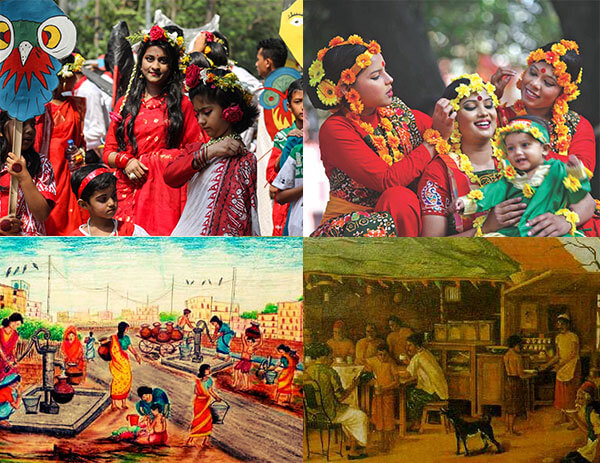
(1861–1941), composed the national anthems of both India and Bangladesh and was awarded the Nobel Prize for Literature in 1913. In its early years the movement espoused the virtues of Western education and liberalism, and it was largely confined to the Hindu community.
Music, dance, and theatre
The Bengali language began to assume a distinct form in the 7th century CE, and by the 11th century a tradition of Bengali literature had been established. Litterateurs received official patronage under both the Pala (8th to 12th century) kings and early Muslim rulers; under the Senas (11th and 12th centuries) and Mughals (early 16th to mid-18th century), however, they were generally unsupported. Nevertheless, Bengali language and literature thrived in various traditions of music and poetry that were practiced outside the court, laying the foundation for the so-called “Bengali Renaissance” of the 19th century. The renaissance was centred in Kolkata (Calcutta) and led by Ram Mohun Roy (1772–1833); its luminary poet, Rabindranath Tagore
Apart from such classical dances as kathakali and bharata natyam—forms that are popular throughout the subcontinent—unique indigenous dances have developed in Bangladesh. Among the most widespread of these are the dhali, baul, manipuri, and snake dances. Each form expresses a particular aspect of communal life and is danced on specific occasions. Improvisation has been a core component of both classical and nonclassical music and dance. With the increasing commercialization of the arts, however, improvisation has been on the wane. Although some of the performing arts are learned informally, others are taught formally at music and dance academies. Two of the oldest and most prominent of such academies are the Bulbul Academy for Fine Arts and the Nazrul Academy, both in Dhaka.
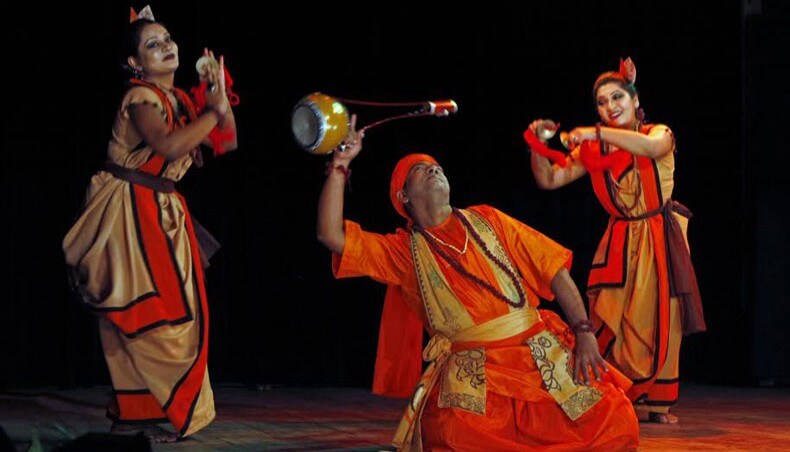
All towns and most villages have cinema houses. Plays are occasionally staged by amateur groups and drama societies in educational institutions and are broadcast regularly on radio and television. Musical concerts, though not as popular as the cinema, are well attended. Especially popular in the countryside is jatra, a form of opera that draws on local legends.
Visual art and architecture
The Bengali language, Islamic religion, and rural character of Bangladesh all serve to unify the country’s culture to a considerable degree. Although some regional variation occurs across the Bengali community, cultural differences between ethnic, religious, and social minorities and between rural and urban populations are much more salient.
The historical prevalence of Islamic arts in Bangladesh is especially evident in the many mosques, mausoleums, forts, and gateways that have survived from the Mughal period. Like Muslim architecture elsewhere in the subcontinent, these structures are characterized by the pointed arch, the dome, and the minaret. The best-preserved example is the 77-dome mosque at Bagerhat in the south. The ruins of Lalbagh Fort, an incomplete 17th-century Mughal palace at Dhaka, also provide some idea of the older Islamic architectural traditions. While such Mughal architecture belongs in style and conception to the same school as medieval buildings in northern India, a unique innovation in Bangladesh has been the translation into brick and mortar of the sloping four-sided thatched roof found in the countryside.
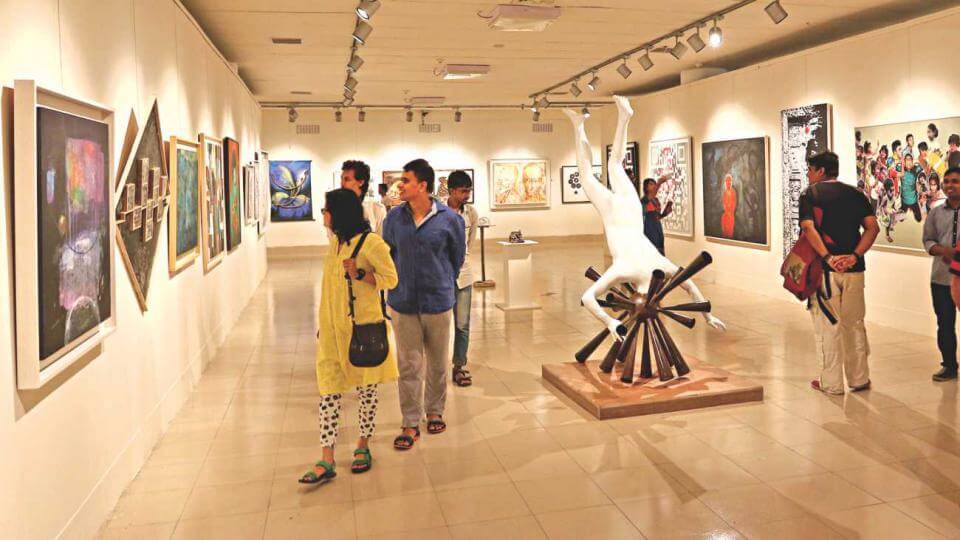
Some remains of pre-Muslim Buddhist architecture have been unearthed at Paharpur and Mahasthan in the north and at Maynamati in the south. They are said to date from the 8th century, and they exhibit the circular stupa pattern characteristic of ancient Buddhist monasteries in India.
Public buildings in the British and Pakistani periods sometimes followed the Mughal style, but preferences subsequently shifted to the International Style, which was prevalent in the United States and Europe in the mid-20th century. The softness of Bangladesh’s subsoil precludes the construction of skyscrapers.
Sports and recreation
During the 20th century, football (soccer) emerged as the preeminent sport in Bangladesh. Field hockey, cricket, tennis, badminton, and wrestling also are popular. Bangladesh made its Olympic debut at the 1984 Summer Games in Los Angeles. Indigenous games of the “touch-and-run” type, however, remain among the favourites of children and youths. One such game, called kabadi, requires each of two teams in turn to send out a player to raid the other’s territory. The raider must, while chanting, touch as many opposing players as he can without taking a breath. Kite flying is another traditional pastime enjoyed by young and old alike. The making of elaborate kites from cloth or paper is a distinctive form of visual art as well.
Media and publishing
Programs are broadcast on radio and television in English and in Bengali; news on the radio is also broadcast in Urdu, Hindi, Burmese, and Arabic. Both radio and television are controlled by the government. By contrast, most newspapers are privately owned, and the constitution provides for freedom of the press. The Bengali newspapers have relatively small circulations, a fact that reflects the low level of literacy in the country. Nonreaders, however, are still exposed to the ideas and influence of the press, as newspapers are often read aloud in groups. Although their circulation is smaller than that of the Bengali papers, English dailies exercise a disproportionate influence, because their patrons belong to the educated classes. Major Bengali dailies include the Daily Prothom Alo, Dainik Ittefaq, and Dainik Jugantor; major English dailies include The Daily Star, New Age, and The New Nation.
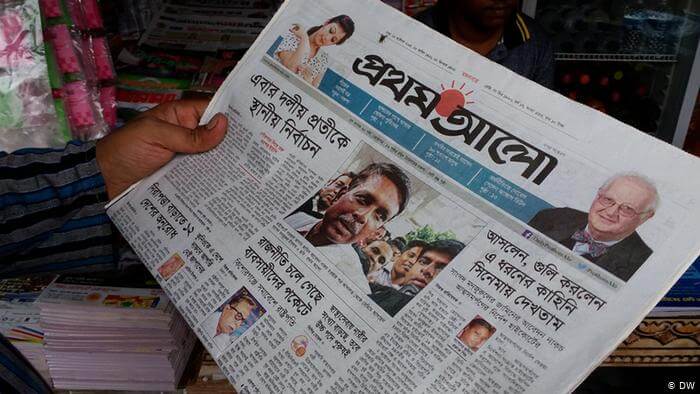
History
Although Bangladesh has existed as an independent country only since the late 20th century, its national character within a broader South Asian context dates to the ancient past. The country’s history, then, is intertwined with that of India, Pakistan, and other countries of the area. The land of Bangladesh, mainly a delta formed by the Padma (Ganges [Ganga]) and the Jamuna (Brahmaputra) rivers in the northeastern portion of the Indian subcontinent, is protected by forests to the west and a myriad of watercourses in the centre. As such, it was long the inaccessible frontier beyond the north Indian plain and therefore was home to a distinctive regional culture. In early times a number of independent principalities flourished in the region—called Bengal—including Gangaridai, Vanga, Gauda, Pundra, and Samatata, among others. In the 14th century Shamsuddin Ilyas Shah was instrumental in unifying many of these principalities. The Mughals added more territories, including Bihar and Orissa (now states of India), to constitute Suba Bangalah, which the British colonial administration later called the Bengal Presidency.
(Brahmaputra) rivers in the northeastern portion of the Indian subcontinent, is protected by forests to the west and a myriad of watercourses in the center As such, it was long the inaccessible frontier beyond the north Indian plain and therefore was home to a distinctive regional culture. In early times a number of independent principalities flourished in the region—called Bengal—including Gangaridai, Vanga, Gauda, Pundra, and Samatata, among others. In the 14th century Shamsuddin Ilyas Shah was instrumental in unifying many of these principalities. The Mughals added more territories, including Bihar and Orissa (now states of India), to constitute Suba Bangalah, which the British colonial administration later called the Bengal Presidency. In 1947, when British colonial rule ended, a downsized province of Bengal was partitioned into East Bengal and West Bengal. East Bengal was renamed East Pakistan in 1955, and in 1971 it became Bangladesh.
Buddhist, Hindu, and Muslim dynasties until c. 1700
From the 3rd century BCE Buddhism flourished as the Mauryan emperors extended their influence in Bengal. Under the Gupta kings, who reigned from the early 4th to the late 6th century CE, Hinduism reestablished its hold, but Buddhism did not fully disappear. The two religions coexisted under the Pala (8th–12th century) dynasty, as well as under the Chandra (10th–11th century) dynasty in the southeast. By the end of the 11th century, the Senas, who were strongly Hindu, had gained control over a large part of Bengal.
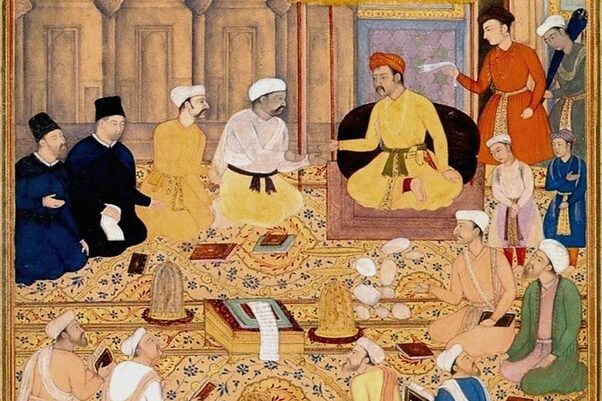
As early as the 9th century, Arab traders had taken Islam to Bengal. About 1200, Muslim invaders from the northwest overthrew the Senas. Muslim rule culminated in the Mughal dynasty (16th–18th century). In eastern Bengal, as in much of the northern part of the Indian subcontinent, Islam became the religion of the majority.
Muslim rule in Bengal promoted a society that was not only pluralistic but also syncretic to some degree. The rulers largely remained uninterested in preaching religion; rather, they concentrated on incorporating local communities into the state system. In their administration, high office holders, influential traders, eminent literati, and musicians came from diverse religious traditions. Nevertheless, practitioners of Sufism (mystical Islam) and Muslim saints did indeed preach Islam, and Muslim settlers received patronage. Although high-caste Hindus received land grants under early Muslim rule, under the Mughals most grants were awarded to Muslim settlers. These settlers developed an agrarian economy in Bengal that ultimately helped the spread of Islam.Meanwhile, the extensive interaction between Islam and Hinduism was reflected in social behaviour and the flourishing of various cults, notably that of the Hindu saint Caitanya (1486–1533). In contrast to more orthodox forms of Hinduism, the Caitanya sect—like Islam—was open to all members of society, regardless of caste or social rank.
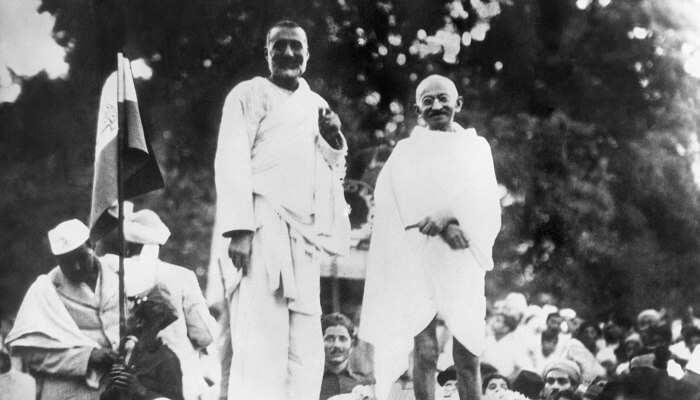
The British period, c. 1700–1947
During the rule of the emperor Aurangzeb (reigned 1658–1707), the English East India Company was permitted to establish its base at Calcutta (Kolkata). The British gained strength in the region as the Mughal empire weakened. In 1757, following a battle in the town of Plassey between forces led by British soldier Robert Clive and the Mughal nawab (viceroy) Sirāj-ud-Dawlah, the East India Company emerged as the dominant political power in Suba Bangalah. Under Gov.-Gen. Charles Cornwallis (served 1786–93), a permanent settlement system was established in the territory—now called the Bengal Presidency—whereby property rights were granted in perpetuity to local zamindars (landlords). This property policy indirectly stimulated the growth of a new landed middle class—especially in Calcutta—called the bhandralok. Initially, the bhandralok was dominated by upper-caste Hindus, but the Muslim presence began to increase toward the end of the 19th century. In time, this middle class emerged as the most active advocate of Indian self-government.
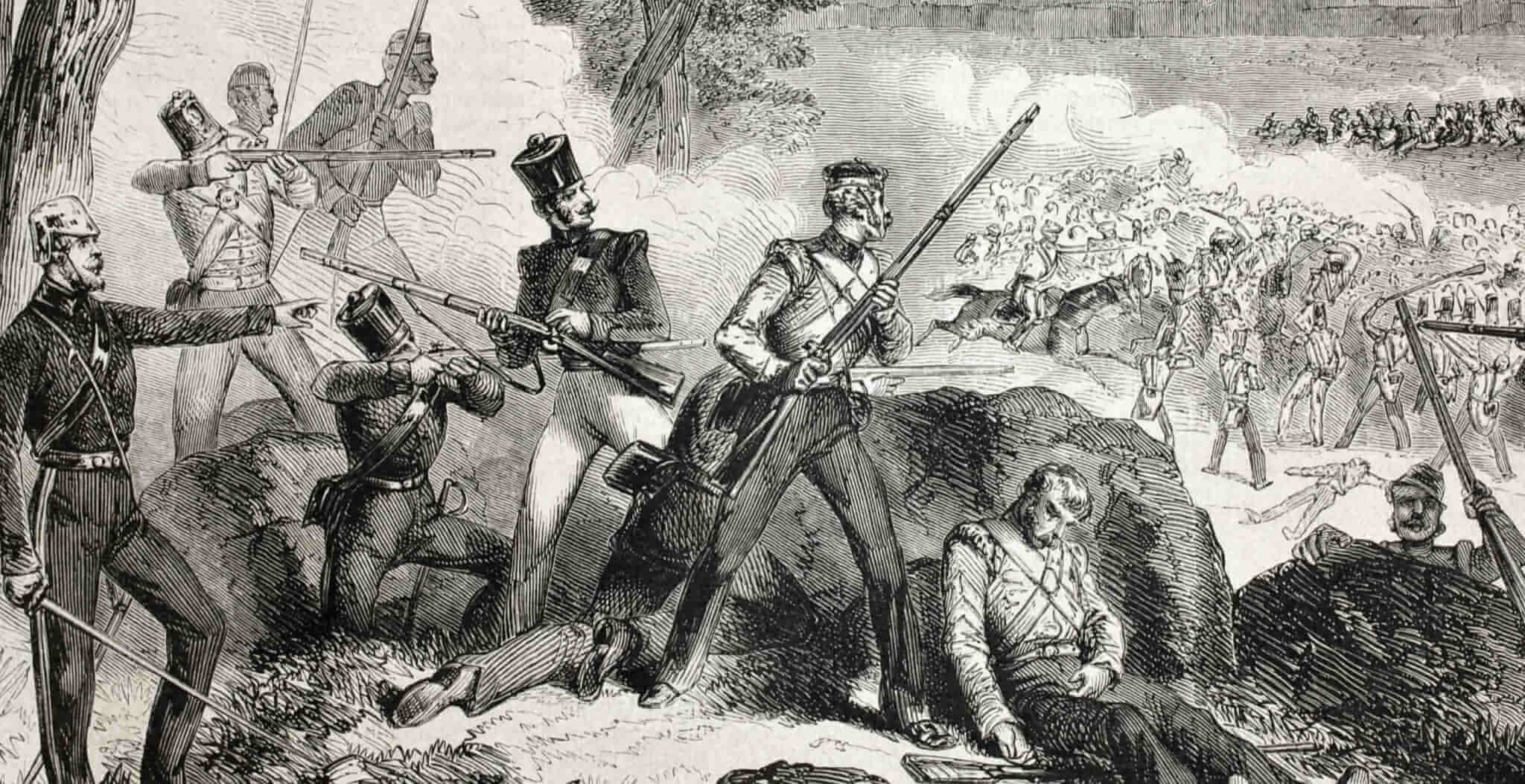
The province of Bengal was almost impossible to administer, even after Assam was made a separate province in 1874. In 1905, largely at the initiative of the viceroy George Nathaniel Curzon, two new provinces were created, ostensibly on a geopolitical basis; these provinces were Western Bengal, including Bihar and Orissa, and Eastern Bengal and Assam. With its capital at Calcutta, Western Bengal had a Hindu majority, while the province of Eastern Bengal and Assam, with its capital at Dhaka, was predominantly Muslim. Aside from increasing administrative efficiency, Curzon’s move was intended to position the Muslims as a counterweight to the Hindus.
The partition elicited vociferous protest in Western Bengal, especially in Calcutta, where the Indian National Congress (also called the Congress Party; formed in 1885) played a prominent role. Indian Muslim leaders, however, mostly supported the partition, and in 1906 they gathered at Dhaka under the patronage of Nawab Salimullah and set up the All-India Muslim League. Their efforts secured separate electorates and separate constituencies for the Muslims under the constitutional reforms of 1909, but they could not save the partition. In 1912 the partition was annulled, Bihar and Orissa were constituted into a new province, and Assam reverted to its separate status.
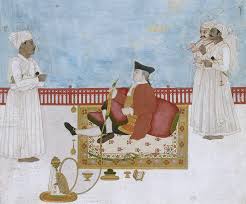
Following the reunification of Bengal, the Congress Party and the Muslim League worked together for self-government; among the leaders of this effort were Nawab Salimullah, Chitta Ranjan Das, Fazl ul-Haq, and Sarat Chandra Bose. Communal animosities resurfaced in the early 1920s, however, in the wake of a failed nonviolent alignment between the Indian Muslim front known as the Khilafat Movement and the Hindu-led Indian nationalist Noncooperation Movement under Mohandas Karamchand (Mahatma) Gandhi. Consequently, in order to achieve political goals, it became necessary to adopt coalition tactics that would transcend communal antagonisms; the politician who proved most adept at this was Fazl ul-Haq, chief minister of Bengal from 1937 to 1943. He set up his own Peasants and Tenants (Krishak Proja) Party and formed a coalition with the Muslim League. In 1940, at the league’s annual gathering at Lahore, Fazl ul-Haq proposed the so-called “Pakistan Resolution,” demanding independent states for Muslims. The following year, however, he was expelled from the Muslim League; he formed a new coalition and continued to serve as chief minister.
In 1942 new rounds of political dialogue commenced, but no agreement could be reached. With legislative elections in 1946, the Muslim League returned to power under the leadership of Hussain Shaheed Suhrawardy, who subsequently became chief minister of Bengal. In August of that year an intense Muslim-Hindu communal conflict erupted in Calcutta, and it eventually spread well beyond the borders of Bengal. This event, combined with protracted and unfruitful discussions between the various groups, made the partition of India appear inevitable. Suhrawardy, Sarat Chandra Bose, and several other prominent political leaders reopened negotiations for a separate, independent, united Bengal.
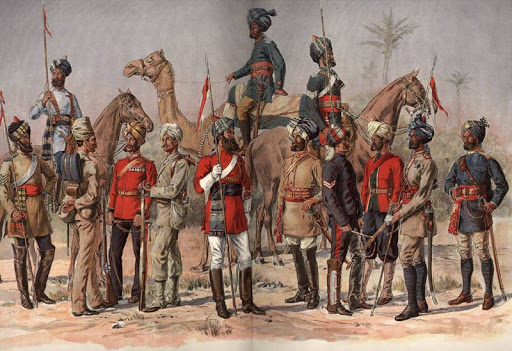
In March 1947 Louis Mountbatten became the last viceroy of British India, with a mandate to transfer powers. As plans were being formulated for the partition of India, Mohammed Ali Jinnah, a leading figure of the Muslim League, advocated for the formation of a united Bengal; Mountbatten was not against the idea, but Mahatma Gandhi and the Congress Party opposed it. When British colonial rule ended in August 1947, two new countries—India and Pakistan—were born, and Bengal was split between them. West Bengal went to India, and East Bengal formed the eastern wing of Pakistan, which was bisected by a vast tract of northern India.
The Pakistani period, 1947–71
Although the boundaries of East Bengal were based ostensibly on religion, they did not entirely reflect it. Owing to disagreements between the Hindu and Muslim contingents of the commission tasked with delimiting the province, the frontiers were ultimately determined by the head of the commission, Sir Cyril Radcliffe. Excluded wholly or partly from East Bengal were such Muslim majority districts as Murshidabad and Nadia; included, however, were Khulna, which was nearly half Muslim, and the Chittagong Hill Tracts, where Muslims constituted only a small fraction of the population. Even Sylhet, a predominantly Muslim district of Assam that joined Pakistan through a referendum, lost a part of its territory to India. The partition catalyzed large-scale migration on both sides of the new boundary as hundreds of thousands of people who believed themselves to be members of a threatened minority moved into what they perceived as a place of refuge. Along with Muslim Bengalis arriving in East Bengal from Hindu majority districts, there were many Muslims who came from other parts of India, mostly from Bihar.
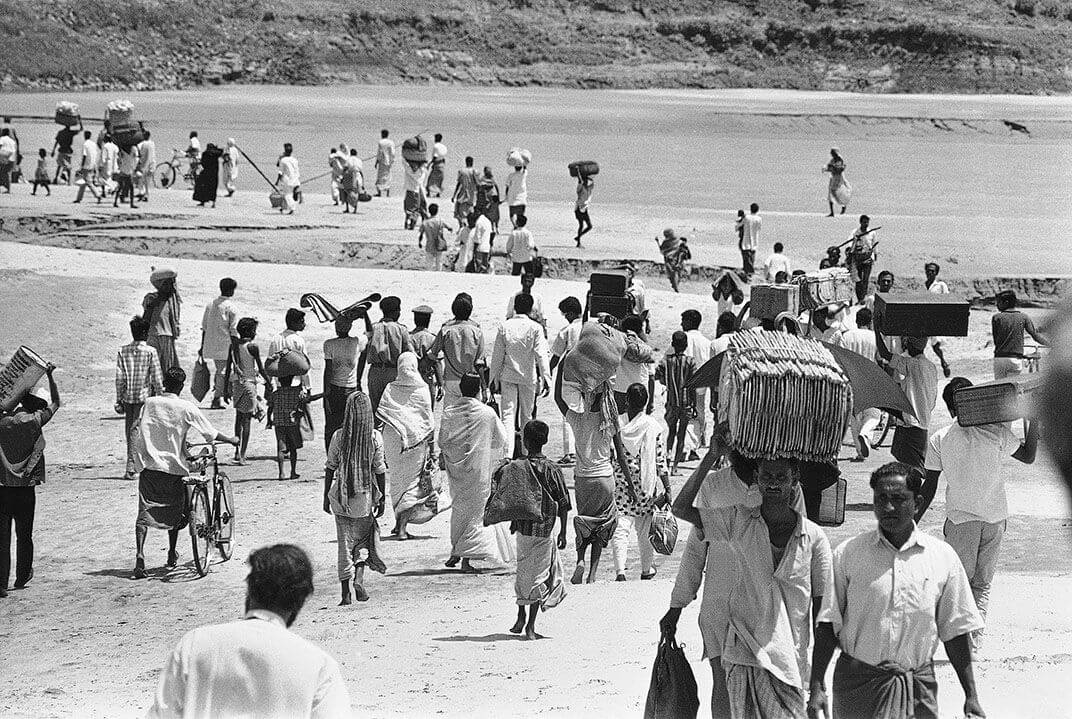
Pakistan began as a parliamentary democracy with a constituent assembly that was charged with the dual function of drafting a constitution and serving as the new country’s legislative body; however, overbearing central leadership eventually nullified the system. Failing to earn the support of Jinnah, who had become the first governor-general of Pakistan, Suhrawardy stayed in India to work with Gandhi for communal harmony, and Khwaza Nazimuddin became chief minister of East Bengal. In the central government (based in the western wing of Pakistan) Bengalis held the majority in the legislative branch but had little representation in the executive. Physically and linguistically separated, the two parts of Pakistan had only tenuous links; their overriding common interest was fear of Indian domination. Jinnah and his advisers believed that unification might be achieved through a common language, Urdu, which was used in the army and administration. By 1948, however, Bengalis had begun to resent the nonacceptance of Bengali as an official language, the domination of the bureaucracy by non-Bengalis, and the appropriation of provincial functions and revenue by the central government.
During Jinnah’s tenure as governor-general, he maintained a powerful central government under his authority. When Jinnah died in 1948, Nazimuddin became governor-general, but the real power lay with Liaquat Ali Khan, the prime minister. When Liaquat was assassinated in October 1951, Nazimuddin succeeded him as prime minister and installed Ghulam Mohammad, a Punjabi, as governor-general. Ghulam Mohammad consolidated a coalition of civil and military forces in the central government and secured a virtual transfer of power from the politicians to the coalition, first by dismissing Nazimuddin (who still had a majority in the legislature) in 1953 and then by dismissing the entire constituent assembly shortly after the general elections of 1954. In those elections, almost all the seats had been won by the United Front, a coalition of opposition parties led largely by Fazl ul-Haq and his revamped Peasants and Tenants Party (now called the Peasants and Workers Party) and by Suhrawardy, who had made a comeback with a new party, the Awami League. In 1955 Ghulam Mohammad left office, and Maj. Gen. Iskandar Mirza, who had served both as governor in East Bengal and as a central minister, took office as governor-general. Under Mirza, East Bengal was renamed East Pakistan.
Although the boundaries of East Bengal were based ostensibly on religion, they did not entirely reflect it. Owing to disagreements between the Hindu and Muslim contingents of the commission tasked with delimiting the province, the frontiers were ultimately determined by the head of the commission, Sir Cyril Radcliffe. Excluded wholly or partly from East Bengal were such Muslim majority districts as Murshidabad and Nadia; included, however, were Khulna, which was nearly half Muslim, and the Chittagong Hill Tracts, where Muslims constituted only a small fraction of the population. Even Sylhet, a predominantly Muslim district of Assam that joined Pakistan through a referendum, lost a part of its territory to India. The partition catalyzed large-scale migration on both sides of the new boundary as hundreds of thousands of people who believed themselves to be members of a threatened minority moved into what they perceived as a place of refuge. Along with Muslim Bengalis arriving in East Bengal from Hindu majority districts, there were many Muslims who came from other parts of India, mostly from Bihar.
Bengali discontent festered, finding a voice in Mujibur Rahman (popularly known as Sheikh Mujib). Like previous leaders, Mujib belonged to a landed family. He had been one of the founders of the Awami League in 1949 and became its leading figure after Suhrawardy’s death in 1963. A superb organizer and orator who was jailed repeatedly by the military, Mujib acquired an aura of martyrdom. Following a 1965 clash between India and Pakistan, primarily over control of territories in the Kashmir region of the western Himalayas, he announced a historic six-point demand for East Pakistani autonomy. When in December 1970 Yahya Khan, president of Pakistan and commander in chief of the armed forces, ordered elections, Mujib’s essentially separatist Awami League won 167 of the 169 seats allotted to East Pakistan in the National Assembly. This gave the league an overall majority in a chamber of 313 members. In West Pakistan the Pakistan People’s Party, led by Zulfikar Ali Bhutto, won 81 of 144 seats; Bhutto consequently saw himself as Mujib’s rival.Throughout March 1971 Pres. Yahya Khan negotiated at length with Mujib in Dhaka while government troops poured in from West Pakistan. Then, on March 25, the army launched a massive attack; destruction was immense, and many students were among the casualties. Mujib was arrested and flown to West Pakistan. Most of the Awami League leaders fled, set up a government-in-exile in Calcutta (Kolkata), and declared East Pakistan the independent state of Bangladesh. Internal resistance was mobilized by some Bengali units of the regular army. Among the most notable of the resistance leaders was Maj. Zia ur-Rahman, who held out for some days in Chittagong before the town’s recapture by the Pakistani army. He then retreated to the border and began to organize bands of guerrillas. A different resistance was started by student militants, among whom Abdul Kader Siddiqi, with his followers, known as Kader Bahini, acquired a reputation for ferocity.
Some 10 million Bengalis, mainly Hindus, fled over East Pakistan’s frontier into India while the Indian government watched with alarm. The Awami League, which India supported, was a moderate middle-class body like the Congress Party; many guerrillas, however, were leftist and a cause of concern. With some of the major world powers taking sides—the United States and China for a united Pakistan, and the Soviet Union and India for an independent Bangladesh—the Indian army invaded both the western and eastern wings of Pakistan on Dec. 3, 1971. The Pakistani defenses surrendered on December 16, ensuring Bangladesh’s independence. A few days later, Yahya Khan was deposed in Pakistan and replaced by Bhutto; Mujib was released from jail and returned to Dhaka to a hero’s welcome.
Bangladesh since independence
In January 1972 Mujib was installed as the first prime minister of the new parliamentary government of Bangladesh, and Abu Sayeef Choudhury became president. Still troublesome, however, were various local paramilitary forces, known as Razakars, that supported the Pakistani cause. The Bengali Razakar force was called Al-Badr, while the Urdu-speaking force was known as Al-Shams. As Bangladeshi retribution against these pro-Pakistani forces ensued, Urdu speakers—known as Biharis, though most had been born locally rather than in Bihar—fled into enclaves where their numbers gave some security; nevertheless, many were killed. Hundreds of thousands of Biharis were placed in overcrowded refugee camps, where decades later many still awaited asylum in Pakistan.
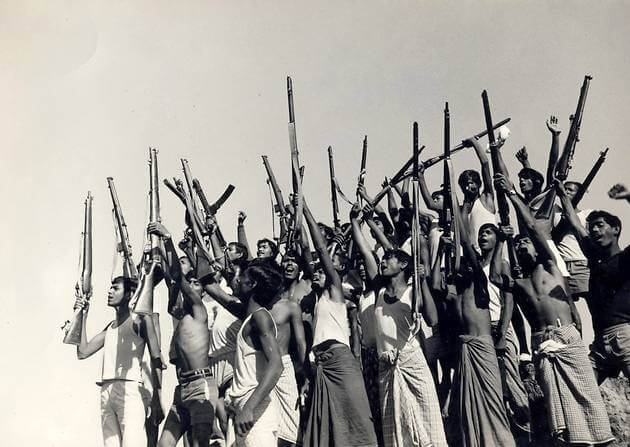
Bangladesh’s constitution of 1973 provided for a secular state, a parliamentary form of government, a bill of rights, and a strong commitment to local government. Acceptance by the international community, however, presented a challenge. The initial application of Bangladesh to join the United Nations was vetoed by China; it was not until 1974 that Bangladesh was admitted to the organization. The new country confronted many other problems as well, including the restoration of transportation, communication, and international trade networks; the rehabilitation of the power supply; the revitalization of education, health, and population programs; and the resumption of agricultural and industrial production.
National
National Fish

Hilsha fish is the national fish of Bangladesh. People in our country like this fish very much. It is very delicious and nutritious. There is a proverb that ‘Vat-e Mas-e Bangali’ (Bangladeshis are fond of rice and fish). Pohela Boishakh (1st Day of Bengali Year) is celebrated by eating fried Hilsha fish with Panta Rice. New or rich guests are entertained by the Hilsha fish. We get sufficient protein from Hilsha fish. Our national economy is being developed by exporting Hilsha Fish. Not only have these, but Hilsha fishes also contribute 1% to our GDP. In the world, about 60% of Hilsha fishes are found in Bangladesh.
National Bird

The national bird of Bangladesh is the magpie robin. They are commonly known as Doyel or Doel and one of the most beautiful and mysterious birds in the world. Bangladesh‘s national bird, magpie robin is a very tiny and shy bird. They are well-known for their melodious call and popular as cage birds. Magpie Robins is one of the old-world flycatchers able to mimic different bird species calls. As they are very unique, intelligent, charming, and beautiful, the magpie robin is considered the national bird of Bangladesh.
National Flower
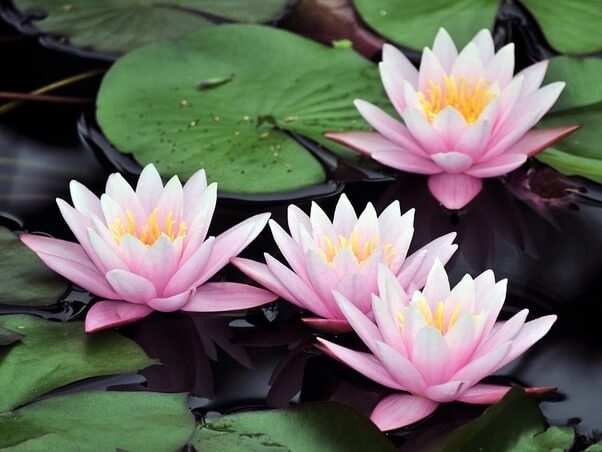
The shape Or Water Lily Is The National Flower of Bangladesh. The Symbol of the National Flower of Bangladesh Water Lily is Also Located In The Center of The Emblem of Bangladesh. White water Lily is the national flower of Bangladesh. Its scientific name is Nymphaea Pubescens. It belongs to the Nymphaeaceae family and its genus of Nymphaea. The water lily is an aquatic type flower. Soon after the liberation of Bangladesh, the then government selected the water lily (white shapla) as the National flower of Bangladesh. The water lily is also the State flower of Andhra and the national flower of Sri Lanka.
National Animal
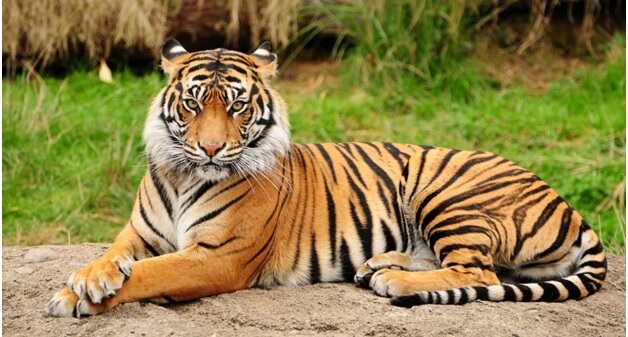
The Royal Bengal tiger is the national animal of Bangladesh. They are the most mesmerizing wild animal in the world. Bangladesh‘s national animal, the Royal Bengal tiger is a symbol of bravery and sharp intelligence. They are also representing power as they are indeed very strong. As they are such a powerful, intelligent, and majestic animal, the Royal Bengal tiger is considered the national animal of Bangladesh. Royal Bengal tigers live in the forests of the Sundarbans and the Chittagong Hill Tracts. As of 2015, there are around 106 tigers remain in the Bangladesh territory of the Sundarbans (Forest Department, 2015).
National Fruit
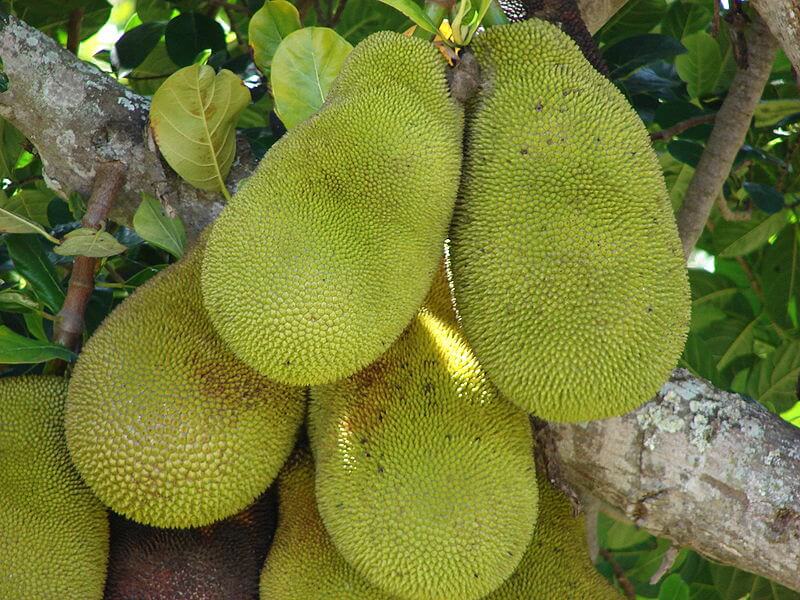
The jackfruit has been named the national fruit of Bangladesh and is a fruit that has been in existence for thousands of years. It is believed that jackfruit trees were planted in Hawaii even before 1888 and archaeologists have estimated that it has been growing in India for between 3000 to 6000 years. It is one of the largest fruits to grow on trees in the world, and a Jackfruit Tree can live and bear fruit for approximately a hundred years if taken care of correctly. The climate in Bangladesh is perfect for the cultivation of jackfruit trees and in addition to its nutritional value, the Jackfruit is an inexpensive fruit and can be bought or grown in the poorest communities.

